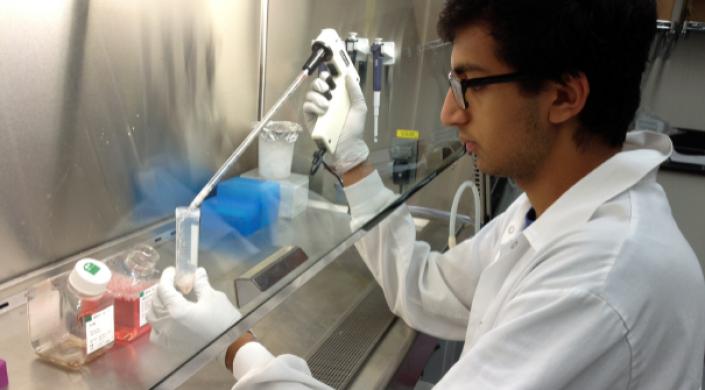What if a physician could effectively diagnose cancer from one drop of a patient’s blood?
Harvard student Neil Davey, A.B. ’18, has developed a technique that pushes the possibility of non-invasive cancer diagnosis one step closer to reality. Davey recently won a silver medal in the undergraduate section of the National Inventors Hall of Fame’s Collegiate Inventors Competition for his research project, “Early Cancer Diagnosis by the Detection of Circulating Tumor Cells using Drop-based Microfluidics.”
His technique involves injecting a tiny amount of blood into a microfluidic device to encapsulate single cells from the blood stream in individual microfluidic drops. Once the cells have been encapsulated, Davey uses a polymerase chain reaction (PCR), a common technique in molecular biology, to target and amplify fragments of cancer DNA within the drops.
By linking DNA amplification to a fluorescent output, he can shine a laser onto the drops to detect and quantify brightness, which would indicate the presence of cancer DNA in a circulating tumor cell. Davey developed this technique in the lab of mentor David Weitz, Mallinckrodt Professor of Physics and Applied Physics at the John A. Paulson School of Engineering and Applied Sciences.
“The advantage of this technology is that it is ultra-sensitive, so I can detect as few as one cancer cell from a billion normal cells in the blood,” he said. “The process is also very specific. One can uniquely detect a wide range of cancers using this DNA amplification technology.”
